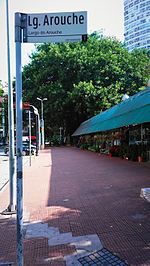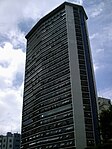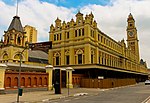Campos Eliseos Palace

The Campos Elíseos Palace (Portuguese: Palácio dos Campos Elíseos), formerly known as the Elias Chaves' Residence (Portuguese: Palacete Elias Chaves), is located on Rio Branco Avenue in the center of São Paulo. It was designed by German architect Matheus Häusler, with construction initiated in 1890 and completed in 1899. The building was originally intended to serve as the residence of coffee grower and politician Elias Antônio Pacheco e Chaves. The structure spans four floors and covers 4,000 square meters, with its design inspired by the Château d'Écouen in France. The construction incorporated technological innovations introduced from Europe, with most materials sourced internationally, including mirrors from Venice, porcelain doorknobs from Sèvres, terracotta from Italy, and locks and hinges from the United States. In 1915, the palace was renamed “Campos Eliseos Palace” when it became the official seat of government and residence of the São Paulo state government. At this time, the original bars surrounding the building were replaced with high walls that obscured it from view. In 1967, a fire necessitated the relocation of both the seat of government and the governor's residence to the Bandeirantes Palace (Palácio dos Bandeirantes) in Morumbi. Since then, the Campos Elíseos Palace has undergone multiple restoration efforts, including an exterior restoration carried out between March 2008 and 2010. The building was officially listed as a heritage site in 1977 by the Council for the Defense of Historical, Archaeological, Artistic, and Tourist Heritage (Conselho de Defesa do Patrimônio Histórico, Arqueológico, Artístico e Turístico - CONDEPHAAT).
Excerpt from the Wikipedia article Campos Eliseos Palace (License: CC BY-SA 3.0, Authors, Images).Campos Eliseos Palace
Avenida Rio Branco, São Paulo Campos Elísios (Santa Cecília)
Geographical coordinates (GPS) Address Nearby Places Show on map
Geographical coordinates (GPS)
| Latitude | Longitude |
|---|---|
| N -23.533561111111 ° | E -46.645088888889 ° |
Address
Avenida Rio Branco 1269
01205-903 São Paulo, Campos Elísios (Santa Cecília)
São Paulo, Brazil
Open on Google Maps










